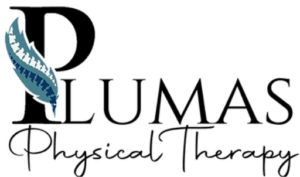Are You Living With Herniated Disc Pain?

Don’t let back pain control your life.
If you’ve been experiencing back pain, it just may be a herniated disc. A herniated disc can put extra pressure on the muscles and nerves around the spinal column.
Strange neck pains, back pains, or extremity symptoms can indicate a variety of potential problems – including one or more herniated discs. How can you tell for sure whether you have this specific problem?
Symptoms may include pain on one side of the body, pain that radiates to the arms or legs, aching, burning sensations in the affected area, and pain with certain movements.
Fortunately, physical therapy can help relieve your herniated disc symptoms and help you move comfortably once again.
What is a herniated disc?
Herniated discs are very common and can run in families. “Studies have indicated that genetic factors influence many, if not most of the diseases commonly encountered in clinical practice by physical therapists, such as a herniated disc. Genetics has been shown to play a role in end-plate herniations at 40-49 years of age.”
A collection of bones make up the spinal column. There are seven bones in the cervical spine, five in the lumbar spine, and twelve in the thoracic spine. A gelatinous inner section and a tough outer ring make up each disc. A herniated disc occurs when the disc protrudes through the outer ring. Numbness, pain, and discomfort can result as a result of this.
It’s easier than you might think to develop a herniated disc, and there are several things that can cause one to occur. Certain motions like turning or twisting can cause a herniated disc. Lifting heavy objects is another culprit. Being overweight can cause a herniated disc as well, because the discs have to support more weight, so maintaining a healthy weight with exercise and a good diet can help prevent one from occurring.
Older people are at risk for a herniated disc. As we age, the discs begin to lose some of their protective water content. This causes the disc to slip more easily out of place.
How physical therapy can help relieve herniated disc pain
When it comes to recovery from a herniated disk, physical therapy plays a crucial role.
A physical therapist uses a variety of methods to alleviate discomfort and promote healing. Deep tissue massage, electric stimulation, and hot and cold therapy are only a few of the passive therapies available for relieving back pain.
During physical therapy treatment for a herniated disk, deep tissue massage may be used to apply pressure to alleviate spasms and deep muscle tension. Heat therapy improves healing by increasing blood flow to the affected region. Inflammation is reduced by cold treatment. Electric nerve stimulation works by sending a small electric current through the nerve pathway to relieve muscle spasms.
Active treatments by a physical therapist address joint movement, stability, flexibility, strength, and posture. A physical therapist will teach you core stabilizing exercises to strengthen the back muscles. You’ll also engage in body muscle exercises to strengthen and condition your body. In addition, a physical therapist will teach you flexibility techniques and proper stretching techniques.
Common treatments for herniated discs
Physical therapy is an effective treatment for herniated discs. One of our physical therapists will conduct diagnostic tests at your first visit to assess the source of your discomfort and confirm that it is indeed caused by a herniated disc.
Once the cause of your pain is clear, an individualized treatment plan will be created for you, based on your specific needs.
This typically includes a series of stretches and exercises aimed at relieving your pain, improving your function, and promoting the natural healing process of your body. Additional treatments may be added as your physical therapist deems fit. These include:
- Traction
- Class IV laser therapy
- Manual therapy
- Ice and heat therapies
- Transcutaneous electrical nerve stimulation (TENS)
- Education on posture and lifting mechanics
Your physical therapist will also advise you on any lifestyle changes that may be recommended in order to prevent herniated discs from developing again in the future.
One of the easiest, fastest, and most reliable ways to treat herniated discs is physical therapy. It is a non-invasive, holistic solution that has successfully eliminated the need for dangerous medications or surgical intervention in many situations.
Find true pain relief today
If you’re suffering from back pain, physical therapy can help. To decide whether you have a herniated disc, a physical therapist will perform a thorough examination and check your medical history. A physical therapist can develop and execute a customized care plan tailored to the affected area after a correct diagnosis has been made.
The goal of physical therapy is to help you attain an active and pain-free life. It’s helped thousands of others and can help you, too. Get on the road to recovery from a herniated disc with physical therapy.
Sources:
- http://www.apta.org/Genetics/
- Herniated Disc – Symptoms, Causes, Prevention and …https://www.aans.org › Patients › Herniated-Disc
